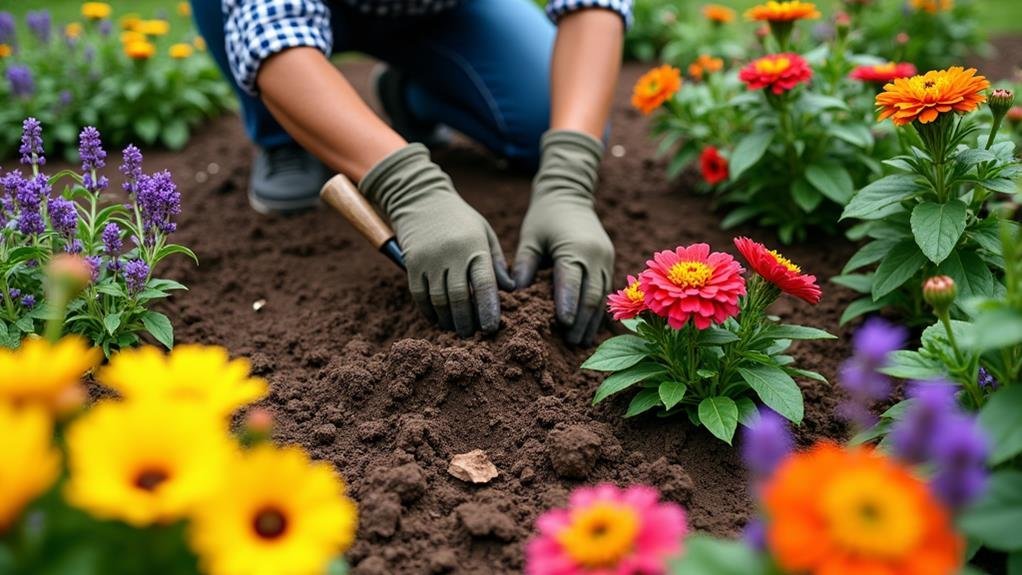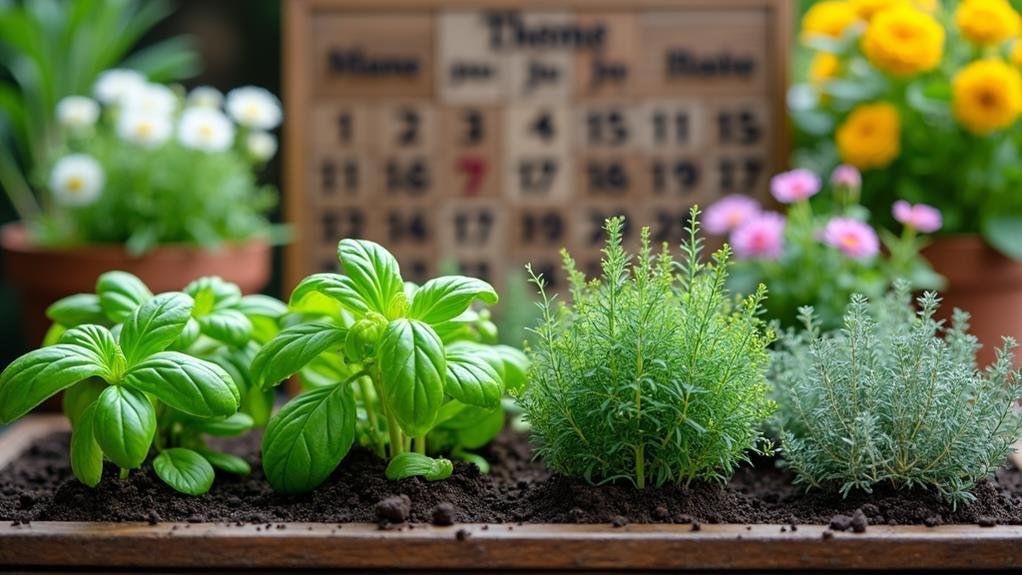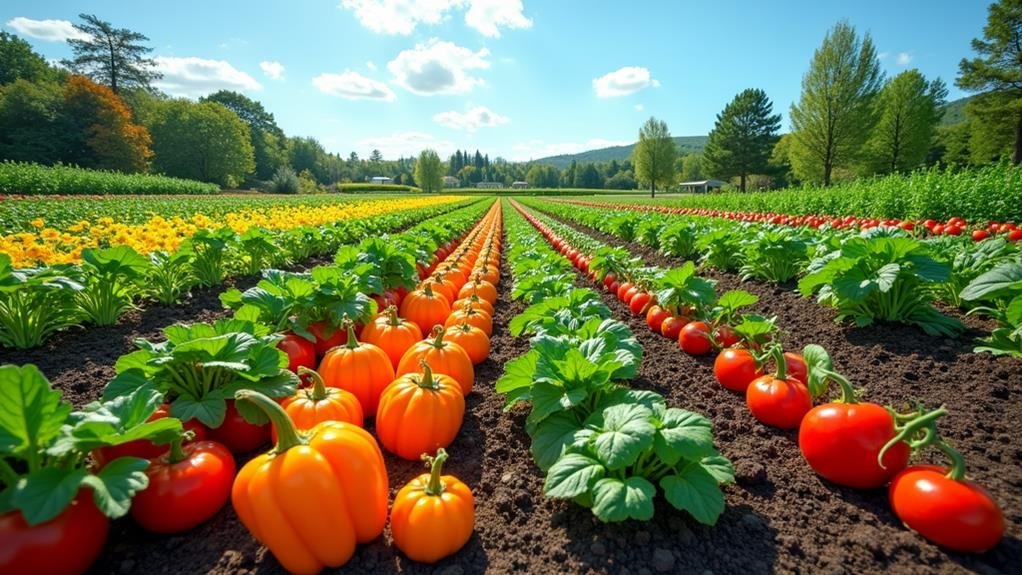When you're planning your small urban garden, understanding your climate zone is essential for successful seasonal planting. You'll want to start with cool-season crops in early spring, but don't forget to monitor frost dates closely. As the season changes, you can shift to heat-tolerant varieties that thrive in the warmer months. However, knowing what to plant and when can make all the difference in your yield. The next steps in optimizing your garden's potential might surprise you, especially as you prepare for the challenges of autumn and winter.
Understanding Your Climate Zone

How can you guarantee your urban garden thrives? Understanding your climate zone is the first step. Your zone determines what plants will flourish in your area, so it's essential to know it. You can find this information through online resources or by checking with local gardening centers.
Each zone has distinct temperature ranges, which affect when you can plant and what types of plants will grow best.
Once you know your climate zone, you can select plants that are well-suited to your environment. For instance, if you live in a warmer zone, you might opt for heat-tolerant varieties. On the other hand, cooler zones may require hardier plants that can withstand frost.
Pay attention to the last frost date in spring and the first frost date in autumn to time your planting correctly.
Also, consider microclimates in your urban space. Areas near buildings may be warmer, while shaded spots might be cooler. Understanding these nuances helps you make informed decisions about plant placement.
With the right knowledge of your climate zone, you'll set your urban garden up for success, ensuring it flourishes beautifully throughout the seasons.
Spring Planting Essentials
With your climate zone knowledge in hand, you're ready to focus on spring planting essentials to get your urban garden off to a strong start.
First, choose the right seeds or seedlings based on your zone; cool-season crops like lettuce, spinach, and peas thrive early in spring. If you're feeling adventurous, consider starting some seedlings indoors to give them a head start.
Next, prepare your soil. Clear any debris and till or turn your soil to aerate it, mixing in compost for added nutrients. A well-prepared bed guarantees your plants grow strong and healthy.
Don't forget to check your frost dates! Planting too early can lead to disappointment if a late frost surprises you.
Watering is another key element. Be consistent, but don't overwater; keeping the soil moist will help your seeds germinate. As your plants begin to sprout, consider using mulch to retain moisture and suppress weeds.
Lastly, keep an eye out for pests. A little prevention goes a long way, so inspect your plants regularly.
With these essentials in place, your urban garden will be on its way to a vibrant spring bloom!
Summer Crop Varieties
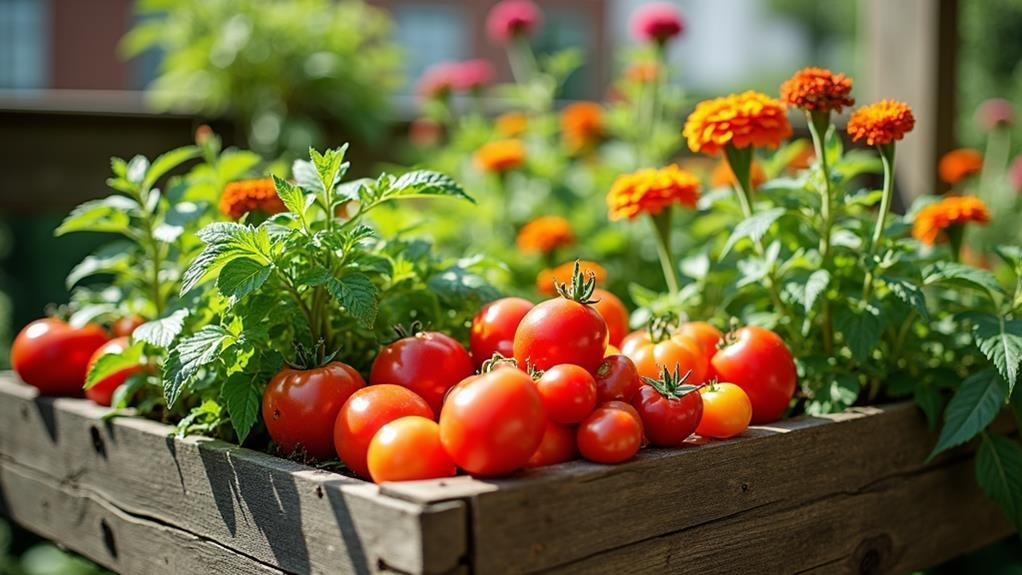
Summer brings a wealth of vibrant crop varieties that can thrive in your urban garden. With warmer temperatures and longer days, it's the perfect time to experiment with different plants.
Consider growing tomatoes; they're a classic summer choice. Choose determinate varieties for smaller spaces, as they produce fruit all at once and don't require staking.
Another great option is zucchini, which grows quickly and can yield a high harvest. Just be prepared to share your bounty with friends, as these plants love to produce!
Bell peppers are also a solid choice; they add color to your garden and can be harvested in various stages, depending on your preference.
Don't forget about herbs! Basil, cilantro, and parsley thrive in summer heat and can enhance your meals. If you're looking for a fun twist, try growing edible flowers like nasturtiums. They're not only beautiful but also tasty.
Lastly, consider planting beans. They're fast-growing and help fix nitrogen in the soil, improving its health for future crops.
With these varieties, you'll have a lively and productive urban garden that brings fresh flavors right to your table. Happy planting!
Autumn Preparation Techniques
As autumn approaches, it's essential to prepare your urban garden for the changing season. Start by cleaning up any dead plants and debris; this reduces pests and diseases.
You'll want to prune back perennials to encourage healthy growth in the spring. Don't forget to remove any annuals that have finished their life cycle.
Next, consider adding compost to enrich your soil. This boosts nutrients and improves soil structure, making it more welcoming for next season's plants.
It's also a great time to plant cover crops, like clover or rye, which can help prevent soil erosion and improve soil health over winter.
If you have containers, be sure to protect them from frost. You can either move them to a sheltered location or wrap them in bubble wrap.
Mulching is another smart move; it helps retain moisture and insulates the roots of your plants.
Winter Gardening Options

Winter gardening offers several exciting options for urban gardeners enthusiastic to keep their green thumbs active during the colder months. You can start by growing hardy vegetables like kale, spinach, and carrots, which thrive in cooler temperatures. These greens not only taste great but also provide essential nutrients during winter.
If you have limited space, consider using containers or raised beds, which can be easier to manage and protect from harsh weather. You might also want to invest in row covers or cloches. These simple tools can provide extra warmth and shield your plants from frost, allowing you to extend your growing season.
Herbs are another fantastic option for winter gardening. Varieties like parsley, cilantro, and thyme can be grown indoors on a sunny windowsill or in a well-lit area. They'll add flavor to your winter cooking and brighten your meals.
Lastly, don't forget about ornamental plants. Pansies and ornamental cabbages can add color to your garden and are surprisingly resilient.
Welcome the winter season by experimenting with these options, and you might find joy in gardening during what many consider the off-season!
Soil Health and Amendments
Maintaining healthy soil is key to successful gardening, especially as you prepare for the upcoming growing seasons. Healthy soil nourishes your plants and helps them thrive, so it's essential to assess its condition before planting.
Start by checking the soil's texture and structure. You want a balance of sand, silt, and clay for best drainage and nutrient retention.
Consider adding organic matter, like compost or well-rotted manure, to improve soil fertility. This not only increases nutrient availability but also boosts beneficial microorganisms.
If your soil is compacted, aerating it can help promote root growth and water penetration. You might want to use a garden fork or a specialized aerator for this task.
Don't forget to test your soil's pH level, which can greatly affect plant health. Most vegetables prefer a slightly acidic to neutral pH, around 6.0 to 7.0.
If your soil is too acidic or alkaline, you can amend it with lime or sulfur to bring it back to the ideal range.
Container Gardening Strategies
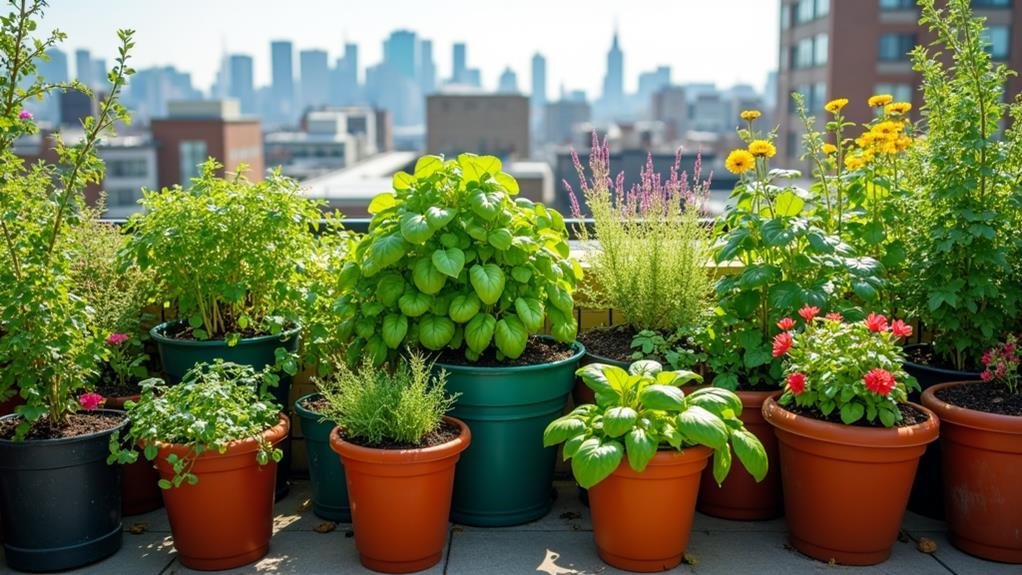
Transform your small space into a thriving garden with container gardening strategies that maximize your planting potential.
Start by choosing the right containers—anything from pots to repurposed buckets works, as long as they've drainage holes. This guarantees your plants won't drown in excess water.
Next, consider the size of your plants. Compact varieties are perfect for containers; think dwarf tomatoes or mini peppers. Grouping plants with similar water and sunlight needs will simplify your care routine.
Don't forget to rotate your containers to guarantee all sides receive equal sunlight—your plants will thank you!
Utilize vertical space by stacking planters or using wall-mounted containers. This not only saves space but also adds an interesting visual element to your garden. You can even hang herbs in small containers on hooks near your kitchen for easy access.
Regularly check the soil moisture, as container plants often dry out faster than those in the ground. Feeding your plants with a balanced fertilizer will also promote healthy growth.
With these strategies, you're set to enjoy a vibrant, productive garden, no matter how small your space may be!
Maximizing Limited Space
Make the most of your limited space by employing clever design techniques that optimize every inch of your urban garden. Vertical gardening is one fantastic method; use trellises, wall planters, or hanging pots to draw the eye upwards. This not only saves ground space but also adds visual interest.
Consider utilizing multi-functional furniture, like benches with built-in storage or tables that can hold pots. This approach keeps your garden tidy while providing extra seating.
Also, think about companion planting. By selecting plants that thrive together, you can maximize productivity from your limited area.
Don't forget about layering your plants. Taller plants can shield shorter ones, creating a mini-ecosystem that promotes growth and saves space.
Conclusion
By understanding your climate zone and following seasonal planting tips, you can create a thriving urban garden, no matter how small. From selecting the right crops in spring to preparing for winter, each season offers unique opportunities. Don't forget to focus on soil health and consider container gardening to maximize your space. With a little planning and care, you'll enjoy fresh produce year-round, and who knows, you might even impress your neighbors with your green thumb! To make the most of your urban garden, it’s important to keep up with seasonal planting tips. In the summer, be sure to water your plants regularly and provide adequate shade for those that may be at risk of sunburn. In the fall, consider planting cover crops to improve soil fertility during the winter months. By staying informed and adapting your gardening practices to the changing seasons, you can ensure a successful and productive urban garden year-round.


